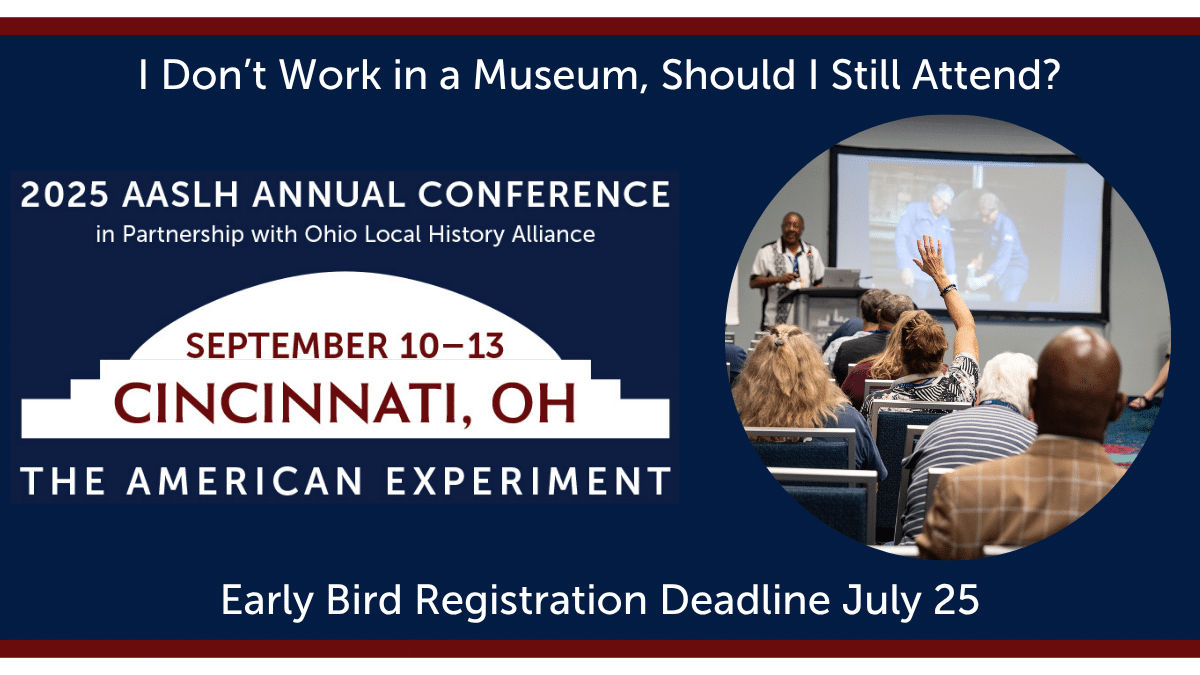Before there was an American Association for State and Local History, many historians – trained and avocational–put a lot of thought into how to get the best product. One example of such thought is from Henry Bourne, “The Work of American Historical Societies,” published in The Iowa Journal of History and Politics (April 1905).[1] His observations on the way state and local history was organized then as now show the need for collaboration.
On the surface Bourne’s paper is a compendium of how the various state history enterprises operated. How content is delivered and the scope of operations has changed significantly. Also, the sheer volume of history enterprises[2] has changed. In 110 years, the number of history organizations has grown from an estimated 500 to approximately 19,250. [3] Yet, much of the paper could have been written today.

Distributing the Work Load
Because it is stated at the beginning, it may be easy to overlook Bourne’s observation that history is a decentralized system. He characterizes the distributed manner of saving and sharing history as encouraging because “the consequence must be a broader interpretation of American history.” Since there were and are many history enterprises, this informal group becomes a community of practice.
The community of practice among history enterprises has two effects. First, the quality of scholarship improves with the greater access to primary records saved by every enterprise. Second, the quality of saving and sharing also improves as practices spread among history enterprises. In Minnesota, the overall quality in the work of saving and sharing has risen with the availability of the Standards and Excellence Program for Historical Organizations (StEPs), meaningful recognition through AASLH Awards, and through Minnesota grant programs. Just as neighbors can’t let each other down and strive to keep up their properties so that all values rise, so also historical organizations strive to meet standards to provide comparable visitor experiences. Or, in short community pride prompts us all to want to provide the best history services to those we serve.
Cultivating Cooperation
Bourne goes on to note that all history enterprises depend upon one another to do their work. No matter the scale–state or local–the work is often the same. The quality of that work then as now depends on consistent staff, access to best practices, and stable and sufficient revenue.
The question put forward by Bourne is how possible would it be to increase cooperation between history enterprises, thus improving the quality of history saved and shared. On the national level that has been answered in part by the American Association for State and Local History, a forum of best practices, standards, excellent examples, and collegial encouragement. Within states, history enterprises are encouraged similarly through forums for certain disciplines and through members of the Field Services Alliance where available.
Strengthening our community of practice by building up individual organizations strengthens the whole field. As shown in recent scholarship,[4] state history enterprises that provide capacity-development services to the many smaller history enterprises grow their revenues from third parties faster than those that do not provide such services. Yes, the scholarship suggests that the Golden Rule works on a financial level as much as it does morally for ethical reciprocity.
Final Thoughts
How can we in 2016 get the best from history work? Greater cooperation, of course! How do we get greater cooperation? Attend AASLH conferences and meetings, for one. And, develop your capacity for saving and sharing history by depending on your Field Services Alliance members and your colleagues at other history enterprises.
As Mark Twain once observed, “History may not repeat itself, but it rhymes.” Henry Bourne’s words from 1905 still ring true.
David M. Grabitske, DBA, leads the Minnesota Historical Society’s Local History Services, which is marking its centennial of service in 2016. He advises nationally on the business of history enterprises, museum facilities, and German Red Wines.
_________________
[1] This journal was published 1903-1948, when succeeded by the Iowa Journal of History.
[2] The use of the term “enterprise” references Robert B. Townsend, History’s Babel: Scholarship, Professionalization, and the Historical Enterprise in the United States, 1880-1940. To understand how history work has unfolded, read this book.
[3] The Institute of Museums and Library Services maintains a “Museum Universe Data File” showing over 35,000 museums in the United States. About 55 percent are history related, yielding the 19,250 number.
[4] David M. Grabitske, “State History Enterprises and Capacity-Development Services” doctoral dissertation, Metropolitan State University, St. Paul, Minnesota, 2014.



